Do you love going to the beach but are concerned about doing that on your own?
In this article we will go over everything you need to know when going to the beach alone, from what to do with your valuables to how to stay safe and suggestions for things to do so you don’t get bored.
If a beach vacation is what you love, don’t let the lack of company deter you from enjoying it to the fullest thanks to our list of hacks, tips and suggestions from our team of solo female travelers and our large Solo Female Travelers community, always ready to share their expertise with you.
In this article we will discuss the following:
- How to keep your belongings safe at the beach
- What to do if your belongings get damages or stolen
- How to keep yourself safe at the beach
- What to do at the beach alone
Ready to make the most of your alone time at the beach? Read on!
Contents
How to keep your valuables safe at the beach
One of the most important considerations when going to the beach alone is what to do with your valuables. If you are with someone, you can take turns when going to the water or when sleeping but if you are by yourself, there is nobody to keep an eye on your things, this is why this is one of the most frequently asked questions in our community.
So let’s start by taking a look at ways to keep your valuables safe when going to the beach by yourself.
Leave valuables behind

This may sound obvious but the best way to keep your valuables safe when going to the beach alone is by not bringing them.
Stick to what you really need and bring just a bit of cash that you will use just for essentials and leave everything else behind at your accommodation’s safe, maybe even your phone.
If you don’t have a safe in your room, you can ask the reception to store them for you until you come back.
Ask other travelers to keep an eye on your stuff
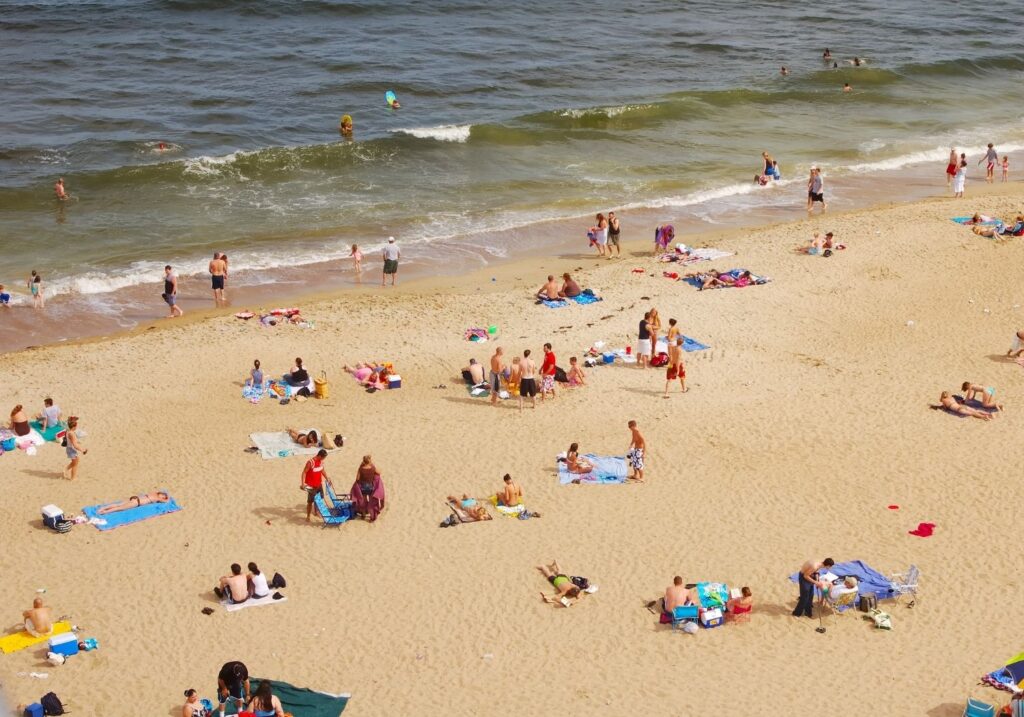
Perhaps one of the easiest ways to keep your belongings safe when at the beach alone is to ask other people for help.
Even if they are not your friends, most people will do you the favor and if you followed the previous advice you should have brought only very few essentials.
There is always a risk when asking a stranger for help, after all, they could be the ones to steal from you, but if you pick wisely you could be sorted.
For example, choose an older couple who look local and who look like they may be coming to the beach a lot, or look for a family with a small baby who may struggle to run away all of a sudden, just make sure they are not so engrossed in what they are doing (like keeping an eye on their children) that they stop watching your stuff.
If you pick another solo beach traveler, you can offer to do the same for them when they feel like going in the water.
Bring a waterproof phone pouch
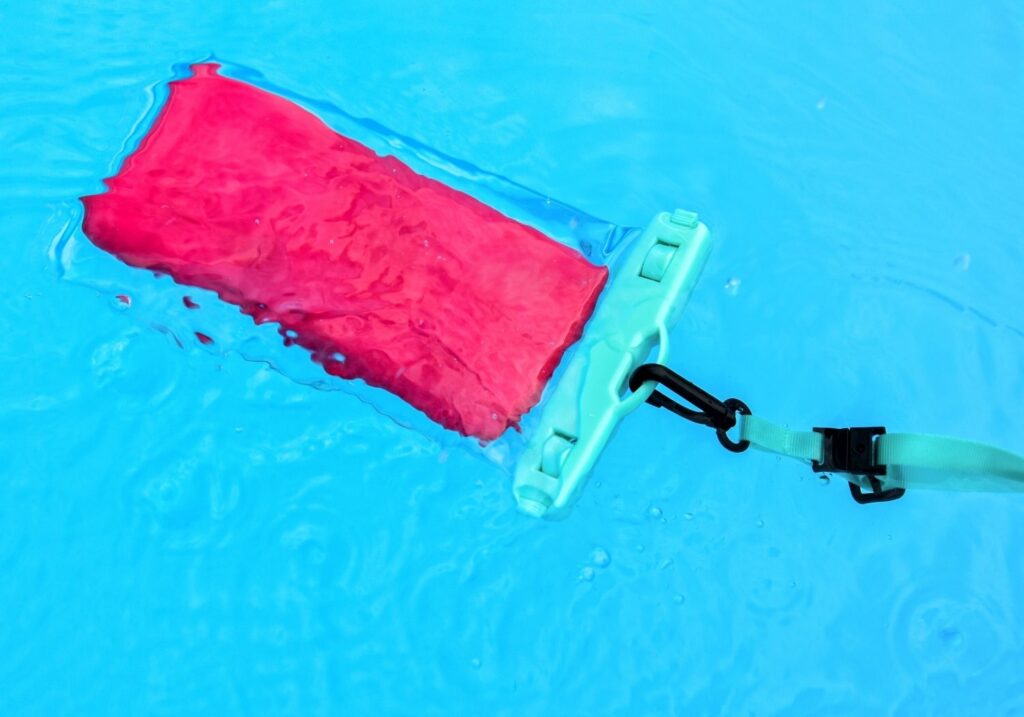
If you need to carry some essentials with you such as cash for food, transportation or entry tickets, your ID and your phone, the best way to keep them all safe at all times is by having them with you.
And the question is, what do you do with your things when you feel like taking a dip or a swim?
Pack them inside a waterproof phone pouch which can also fit other things like cash or credit cards.
Our group member Bernadette shared her tip: “I always take a waterproof phone holder thing that goes around my neck. You can get loads in there. Money, phone and room key sorted.”
These small bags protect your phone by sealing out all the water. There is a wide variety of colors and styles, but try to choose a transparent and touch sensitive one, which allows you to operate the touchscreen and even take underwater photos.
My recommendation
Below are three options for waterproof cases that have the most positive reviews on Amazon. I have the JOTO pouch and it works fine though it is a bit tight with my Samsung XL with its cover on so I have to remove the cover when putting it into the pouch.
Wear a waterproof bag
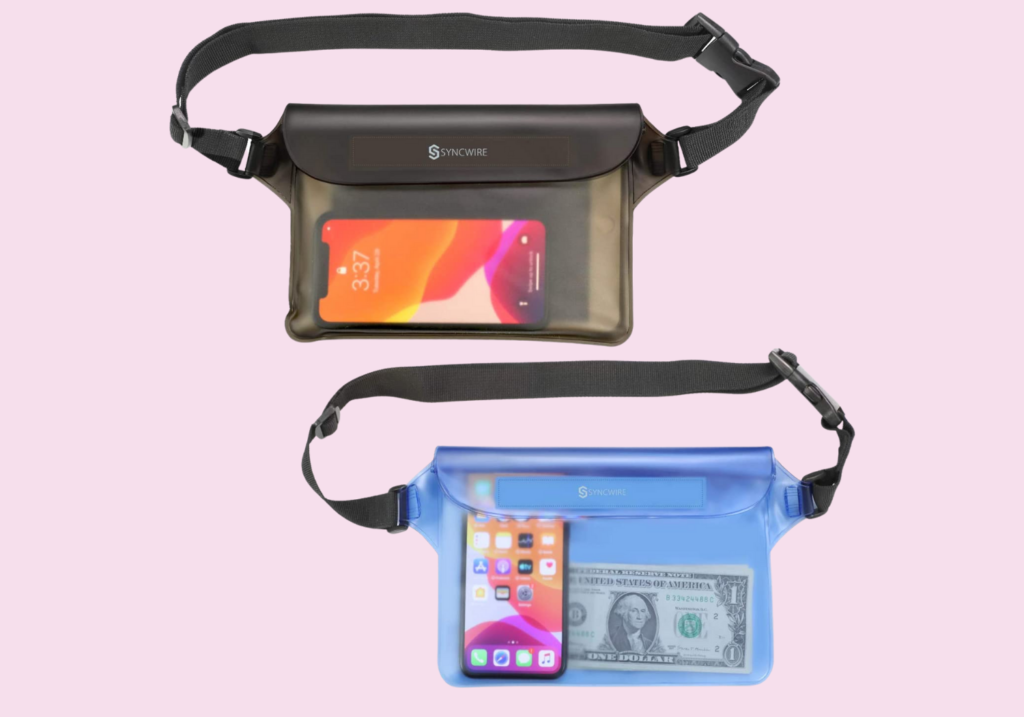
Wearable waterproof bags are a very effective way to keep your valuables dry. They often come in the shape of a fanny pack or belt you can wear around your waist so you don’t lose them when swimming.
Unlike the phone pouches, they are not see-through or designed for you to be able to use your phone (aka they are not touch screen), they are mostly for keeping things safe and with you in the water, not so much for using your phone underwater so they are a good choice if you like do keep active in the water and want to have your items with you.
These bags are often a little bit bigger that the phone pouches so you can also fit in cash, room key, credit cards and other personal items you carry with you and because they go around your waist or body, they are harder to lose. Adjust the waist straps and feel free to go for a swim or even do water sports like snorkeling, kayaking or paddleboarding.
My recommendation
Below are some options for waterproof bags in various sizes. Make sure to get one that is big enough to fit everything you may carry to the beach, for example, a Kindle. The KYG pack of three waterproof bags comes in 3 sizes so you have a lager bag to go kayaking or sailing and two smaller ones for going to the beach alone.
Anti-theft portable safe
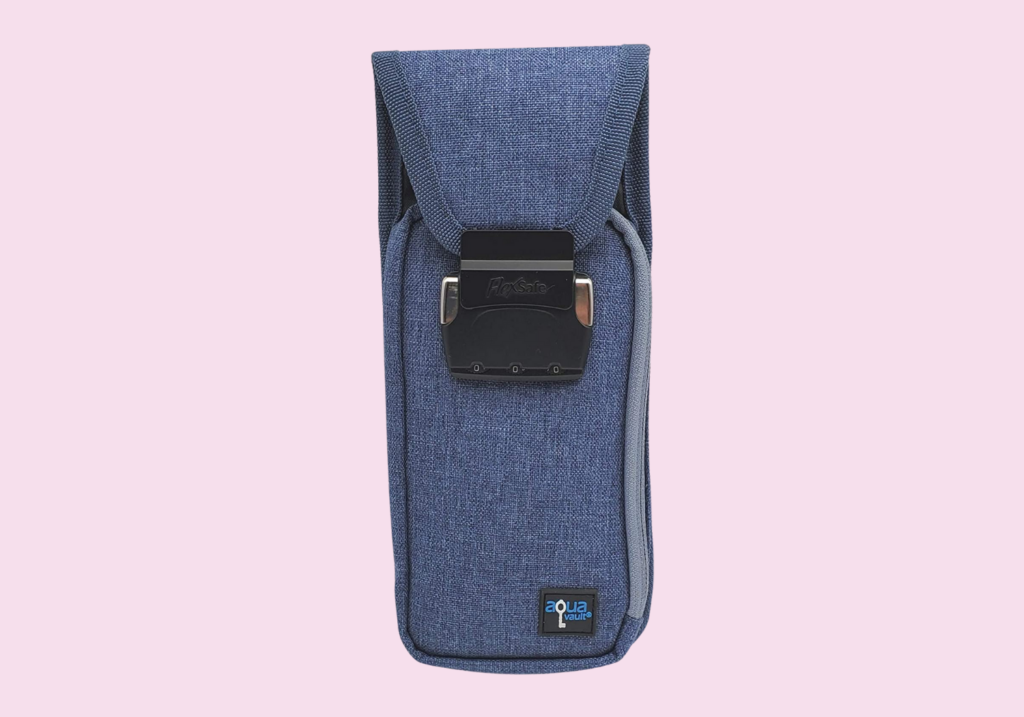
A portable safe can be in the shape of a bag or a box and has a lock with combination access that will secure your items and prevent any theft during your stay at the beach.
As recommended by Jeanette, one of our group members.
“I have a little lockbox that I bought off of Amazon that you can strap to anything that is a permanent structure”.
You can save all your valuables in the internal pouch and then lock it to any fixed object, for example a beach chair, table or umbrella.
Portable safes are a good deterrent for thieves but they are not like fixed safes and can be easily broken with a hammer so it’s more useful for places where there are others, like a swimming pool, and we recommend you keep an eye on it while you go take a dip in the water.
Find this and more safety tips by joining Empowerful course: our Safety, Wellness and Sexual wellbeing online course, with a really great range of masterclasses and sessions all around staying safe as a solo female traveler. Get your access here.
My recommendation
There are various models of portable safes but the FlexSafe is the one which has revolutionised this space thanks to the popularity that was brought by its appearance in Shark Tank.
Rent a locker

Many public pools, private beaches or beach clubs have locker services for you to rent while you are there.
This will give you the flexibility to take out the items you need and then put them back safely when you feel like going into the water or walking around.
It’s possible that the locker will be secured with a key, so we recommend you bring a hair tie, bracelet or chain so you can tie the locker key around your wrist or neck and have it with you at all times.
Bring a water bottle with a secret compartment
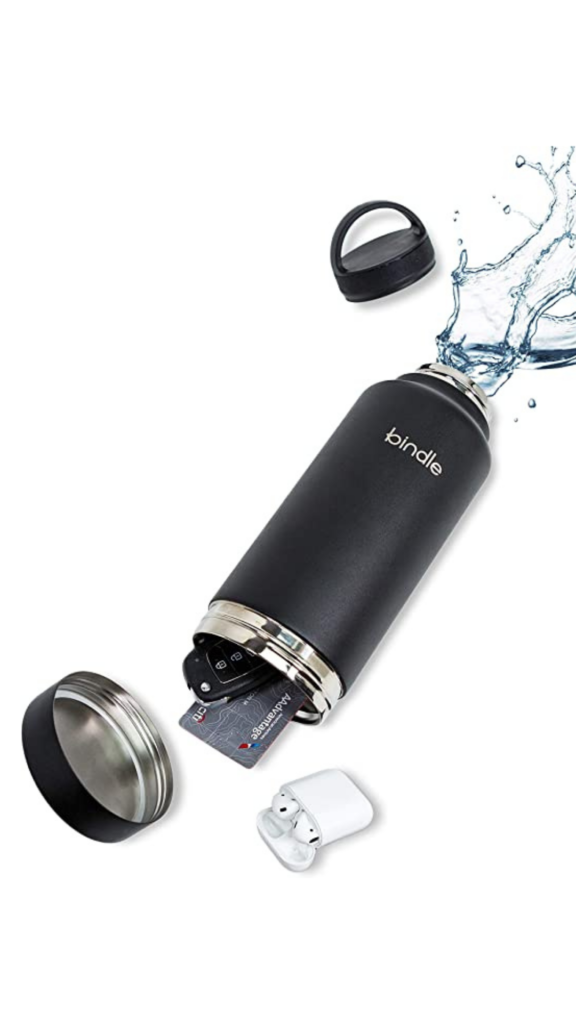
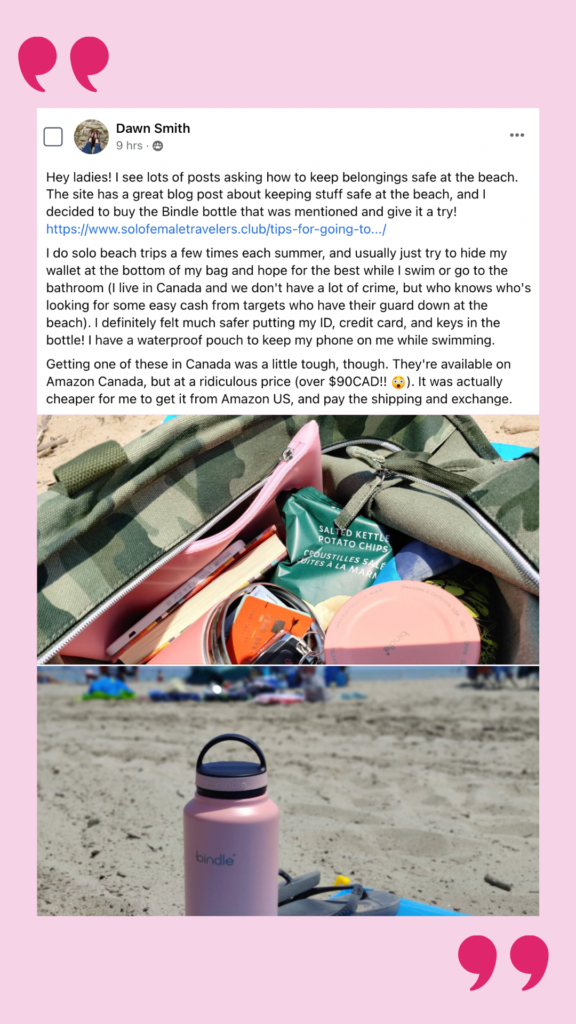
Sometimes, the best way to hide something is to have it in plain sight and this is what diversion items do, incorporate a hidden storage compartment in regular items that are not attractive to a thief in which you can keep your valuables safe.
This is not only a useful tip for the beach but one of our favorite travel safety tips.
“I have a water bottle with a hidden compartment in it. It’s pretty awesome. It’s been useful for more than the beach though. Snacks on a plane/train/hike. Having a secure place to hide valuables when on an overnight bus, etc.”, shared our group member Megan.
No one will think twice about what’s inside a water bottle, a bottle of water or a hair brush, so they’re ideal places to hide valuables such as your cash, credit cards, keys, etc.
Pro tip: Diversion items are not big enough to stash your phone.
My recommendation
There are many kinds of diversion objects but we like the water bottle ones because they are also useful water bottles.
Bury a small bag in the sand
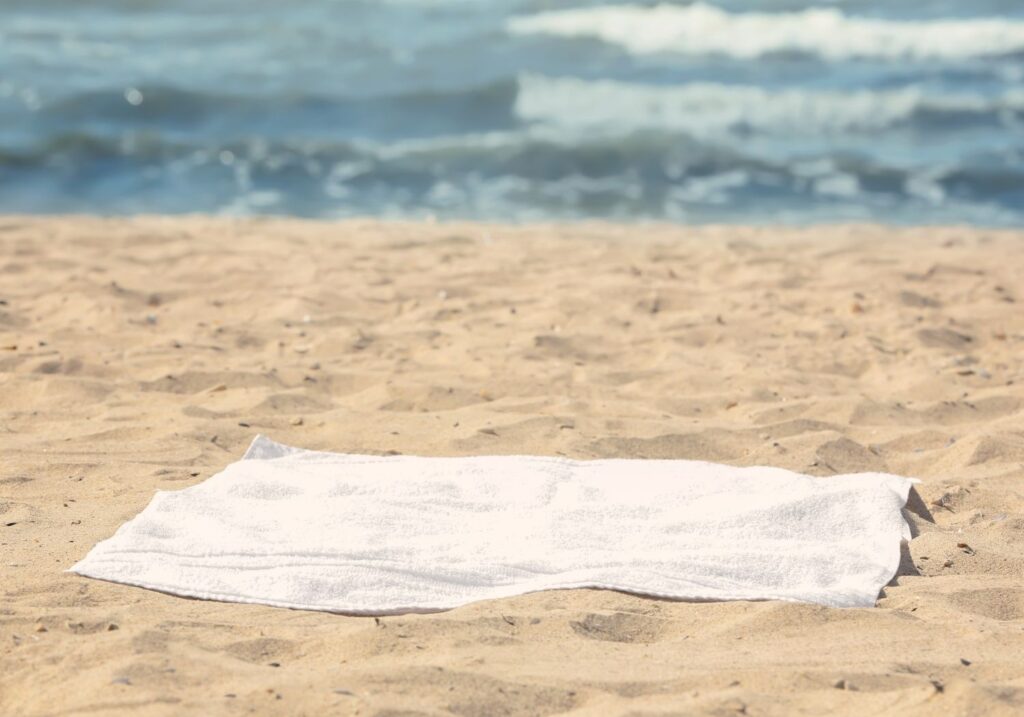
Put your valuables inside a small ziplock bag and bury it in the sand just under your towel or pair of shoes so you can easily find it.
While this is a pretty easy and smart hack, it’s important to mark the exact place where you hid your items so that you don’t end up spending hours on a treasure hunt.
“Bury it in the sand then cover it with your towel”, suggested Marah, one of our FB group members.
Pro tip: Be discreet when you bury your items so that others don’t see what you are doing, for example, by burying it right next to your towel while you are laying down.
Water damage to gear or electronics
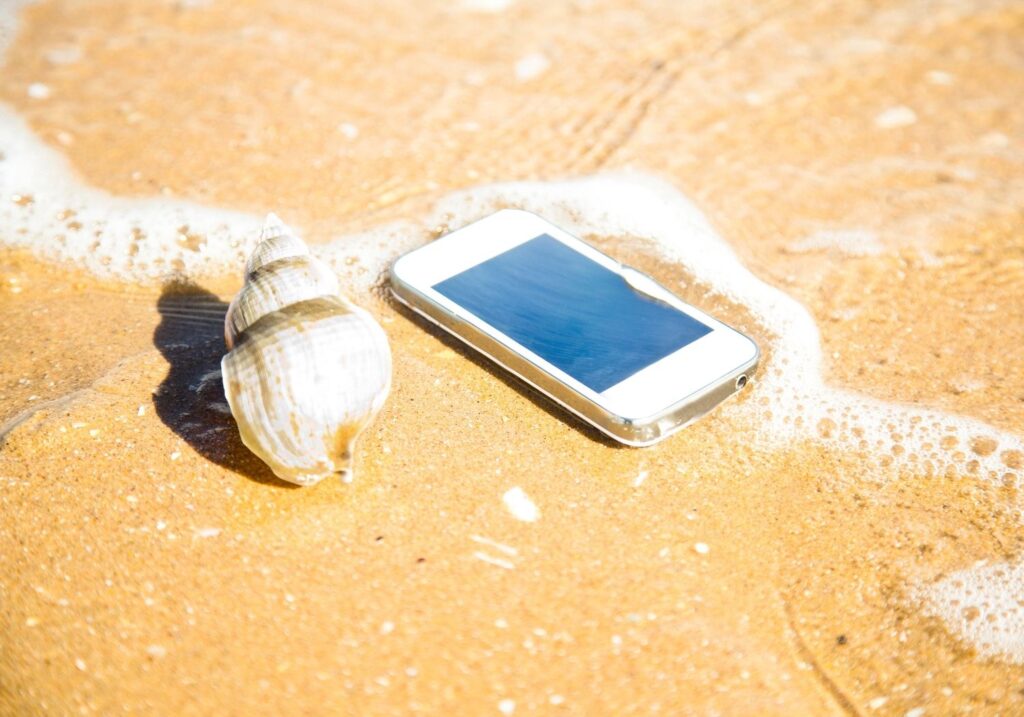
Besides theft, there are other risks to your belongings associated with being near water, that is, for your electronics to get water damage. If that happens, here are some hacks to recover them safely:
- Turn the device off. This is the first thing you should do to protect your device from short circuiting.
- Remove the battery. If your device lets you remove the battery (not the case for an iPhone), don’t hesitate to remove it and keep it dry aside.
- Wipe it dry. Clean and wipe your device until it’s completely dry on the outside. Do this with a dry cloth (you can use your towel or your shirt).
- Put it in a bag of rice. It’s not a myth! Go to the nearest grocery store and buy a bag of rice. Put your phone inside and leave it there for around two days. The rice will absorb all the moisture and liquid left inside your device. You can also use other adsorbents like silica packets (the ones that come in shoe boxes or handbags) or cat litter, but rice is usually the easiest to find.
- Cross fingers and turn it on. After resisting two days without your device, try to turn it on. It’s vital you don’t try to turn it on before the two days, because if any water particles are left inside, the recovery may not be successful.
What to do if your belongings are stolen at the beach
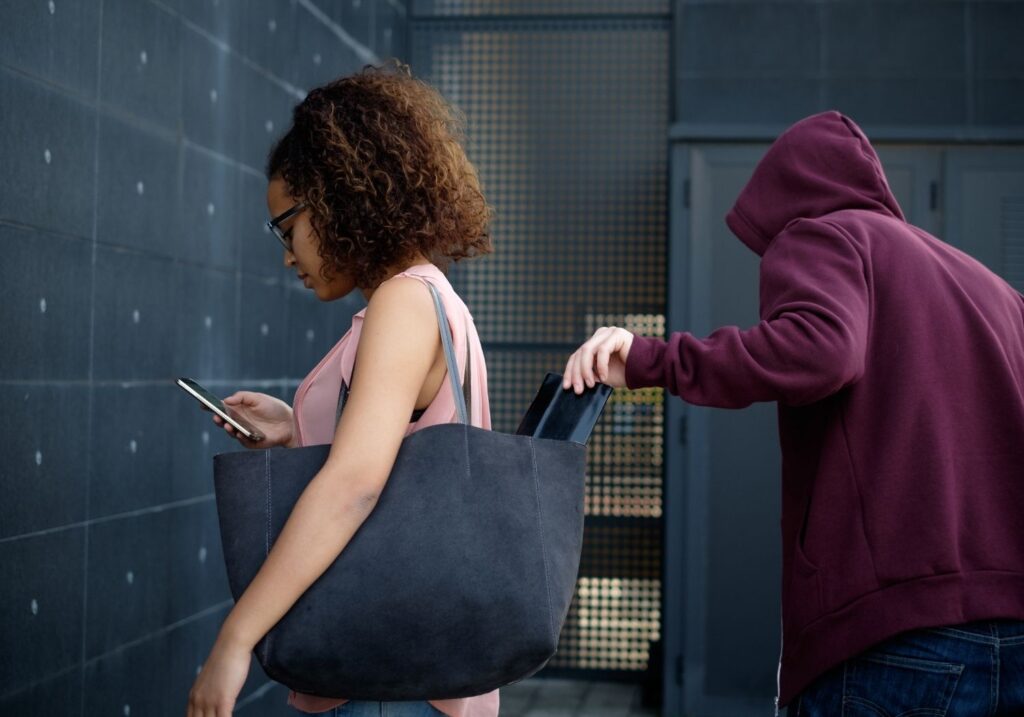
If, despite all your efforts, some of your belongings get stolen while you are at the beach alone, this is what you should be doing:
- Visit the lifeguard station. If there’s one on the beach you’re on, ask the lifeguard on duty for help. Describe your situation, timing and what items were stolen. Lifeguards on the beach are trained to respond and help you in the best way possible by directing you to the right place.
- Go to the lost and found area. If you’re on a beach club or a hotel beach, maybe even a public beach, look for the lost and found department and ask if anyone brought your items, someone could have brought it there thinking it was left behind.
- File a police report. If your valuables or documentation were stolen, you will need a police report to get replacements or claim from your insurance.
- Claim from your travel insurance. We strongly recommend our members to buy travel insurance when they travel and this often includes your luggage, valuables, cash or documents being stolen or lost. However, note that leaving your belongings unattended would most likely void coverage. This usually includes leaving your valuables in a public space like a beach, with other people who were supposed to watch them, at a certain distance in which you couldn’t control them, or near you while you were asleep.
Keeping yourself safe when at the beach alone
Besides keeping all your valuables safe, you also need to make sure that you protect yourself and take care of any possible risks to your personal safety and wellbeing when alone at the beach.
Find a comfortable place
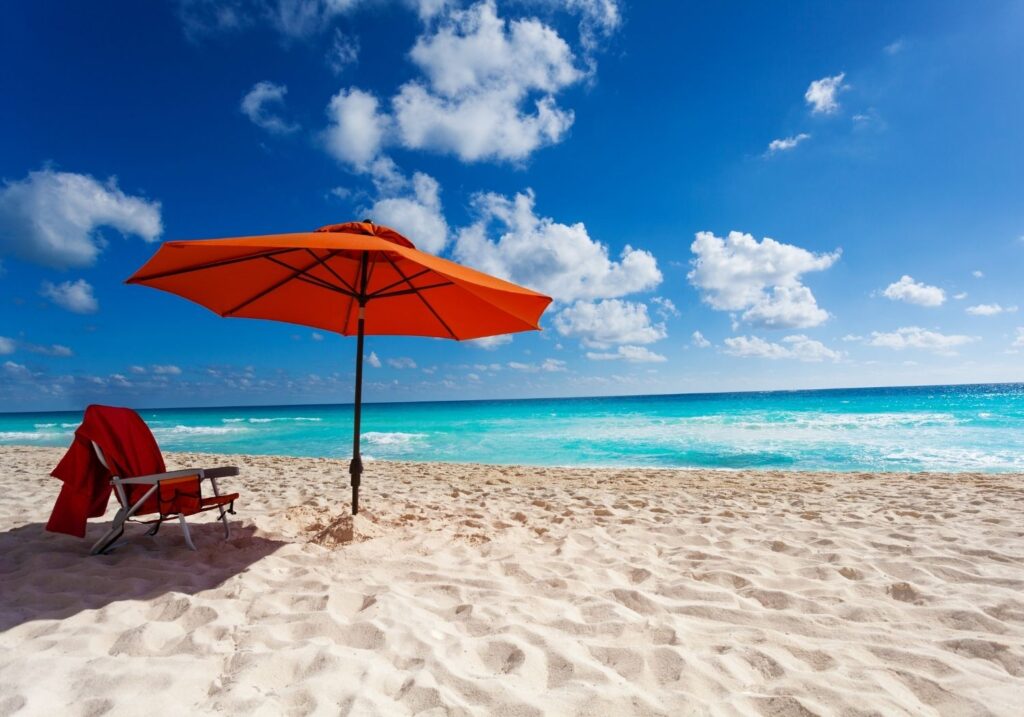
If you are a regular beach goer you know how important and strategic it is to pick the right spot to put your towel.
If available, we always like to rent a beach chair, sunbed or umbrella, so we have a spot for our things.
If you rent an umbrella, it will also help to give you shade and avoid severe sunburn. In some cases, the providers will also be vigilant and watch over you to avoid any incidents, and the sheltered environment provides overall protection.
While you may be tempted to pick a sunbed on the first row, the closest to the sea, this one is also the most exposed to theft and to passers by, so we prefer rows at the back which are more protected.
These are also further from the sea and the risk of the tide or a wave getting your belongings wet.
If you can, pick a spot near the lifeguard on duty, they are always vigilant of their surroundings and will be available in case you need help.
We also like to pick a spot next to a family or another solo traveler to have the chance to ask them to keep an eye over our less important items (towel, hat, sunscreen) if we need to use the bathroom, buy a drink or freshen up in the water.
Put sunscreen on
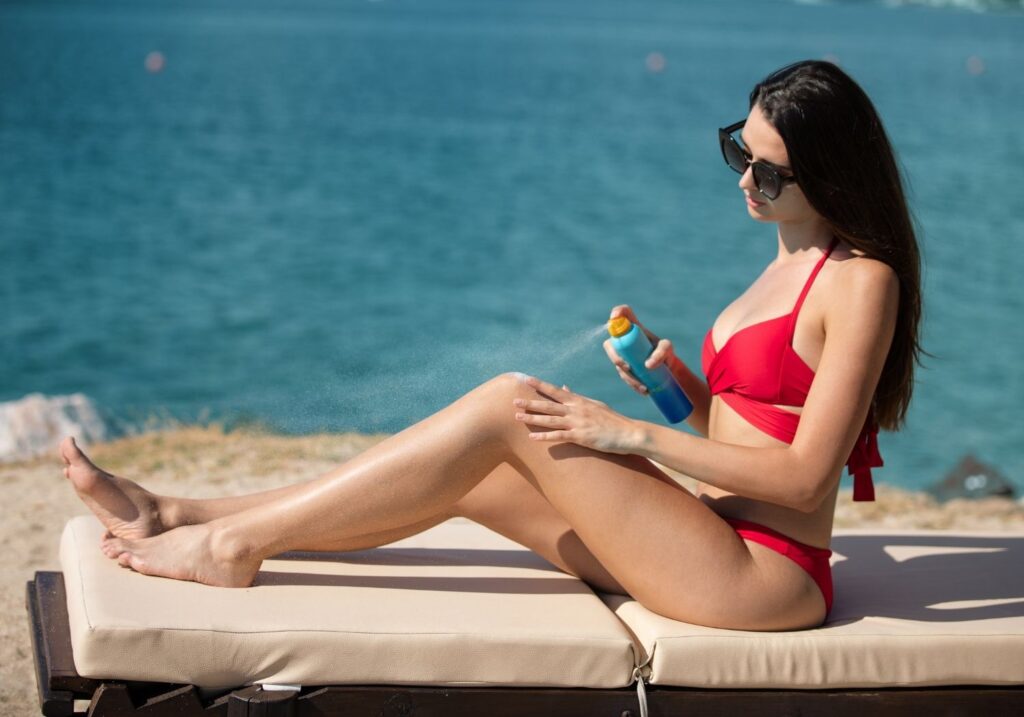
It’s vital to protect your skin from sun damage and sun exposure related illnesses like skin cancer.
As reported by the U.S. National Cancer Institute, Melanoma of the skin represents 5.6% of all new cancer cases in the U.S and thousands die every year from this form of cancer.
If you go to the beach, we strongly recommend using broad spectrum sunscreen (which protects from both types of radiation: UVA and UVB), with a SPF value of at least 30 or higher. Don’t forget to check the expiration date to make sure the sunscreen works.
And what about “waterproof” sunscreen?
The U.S. Food and Drug Administration (FDA) affirms that no sunscreen is waterproof and they usually rub off within 60-90 minutes, so it’s important to reapply sunscreen at least every two hours, especially when swimming or sweating.
Another sun safety tip to lower the risk of skin damage is avoiding exposure to the sun during the peak hours with high ray intensity between 10 a.m. and 2 p.m.
Try going for the early morning or later afternoon to take care about your skin and get a more beautiful glow.
Pro tip: If you are alone at the beach, we recommend buying spray-on sunscreen which you can easily apply everywhere without the help of anyone. However, know that aerosols are not great for the environment which is why all the reef-safe sunscreens are lotion based.
If you want to be sure your back is properly covered, look for another woman, especially someone who looks like they are also concerned about sun damage because they will be better at applying it and not missing spots.
Another alternative recommended by our group member Christy, is to buy a back lotion applicator.
There are two main kinds, one with a long handle and pads and another fabric one with handles on each side.
This applicators make it possible to apply sunscreen or any kind of lotion to all the hard-to-reach body parts.
“I got this after having back surgery and being unable to bend to put lotion on my legs. It works well”, reviewed Rexanna, member of our community.
Pro tip: Don’t forget to put sunscreen in the places we often forget about such as our ears, the soles of our feet (if planning to lay facing down) or our eyes if planning to sleep facing up without sunglasses (which we do not recommend).
My recommendation
When choosing a sunscreen, look out for organic lotions that are harmless to the marine life. Some lotions are toxic to corals and fish. Brands like Sun Bum are reef safe. I use their 50 SPF cream and have never sunburned while using it. I also have their aftersun.
I apply it on my back before I leave the house so I can do all the contortion required to reach every point of my back in front of the mirror.
When it comes to back applicators, there are many models depending on what you like better. I prefer the spatula style.
Keep yourself hydrated
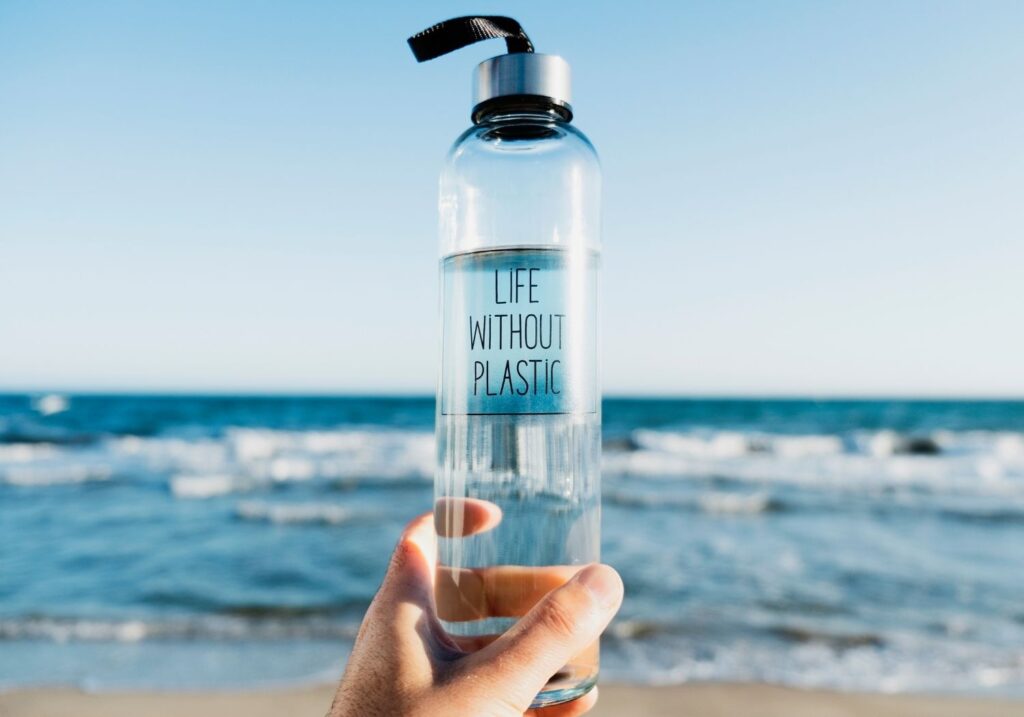
We know, from personal experience, that heat stroke or dehydration can ruin your holiday and sometimes all it takes is drinking enough water to keep yourself safe when at the beach.
About 50 to 75% of our body is made up of water and most mature adults lose about 2.5 to 3 liters of water per day, which can increase in hot weather. Replenishing that water, especially when you are somewhere hot and you sweat a lot, is key to staying healthy.
You should drink about 2.5 liters a day during warm days so don’t forget to bring your water bottle and keep drinking slowly and consistently.
My recommendation
I prefer plastic bottles to metallic ones because they are larger and weight far less. I also prefer the flat bottles to the round as they are easier to carry. Collapsible bottles are also great for travel and I have a bright orange one I often use.
Bring snacks with you
Food sold at the beach might be a bit expensive, especially if you’re traveling on a budget.
Be prepared and bring some snacks from a grocery store or a convenience store, which are generally more affordable.
It’s important to be well fed and fully hydrated during a beach day, so you can stay healthy and with the right amount of energy to enjoy your beach solo trip.
Avoid long exposure to the sun

When exposed to extreme heat, people can suffer from potentially deadly illnesses, such as heat exhaustion and heat stroke, not to mention that ultraviolet (UV) rays are the main cause of skin cancer.
The Skin Cancer Foundation makes clear that there’s a major health risk that comes after sunburn, stating that five or more sunburns doubles your risk of developing potentially deadly melanoma.
The World Health Organization developed a tool called the Global Solar UV Index (UVI), which measures the intensity of UV radiation on the Earth’s surface that can cause damage on the human skin. The higher values indicating a major potential for damage to the skin.
The UVI radiation levels depend on geographical location and time of the day. Learn more about this tool and consider it when traveling to your next destination, the UVI is usually reported in weather forecasts in different media channels.
The bottom line is, it’s critical to stay sun-safe applying your sunscreen correctly and staying properly hydrated.
Don’t forget to bring a water bottle or buy a drink on your way to the beach. If you start feeling dizzy or unwell and suspect you have heat stroke, move to the shade, drink water and head over to the nearest clinic or hospital to get help.
Follow safety signs and beach flags
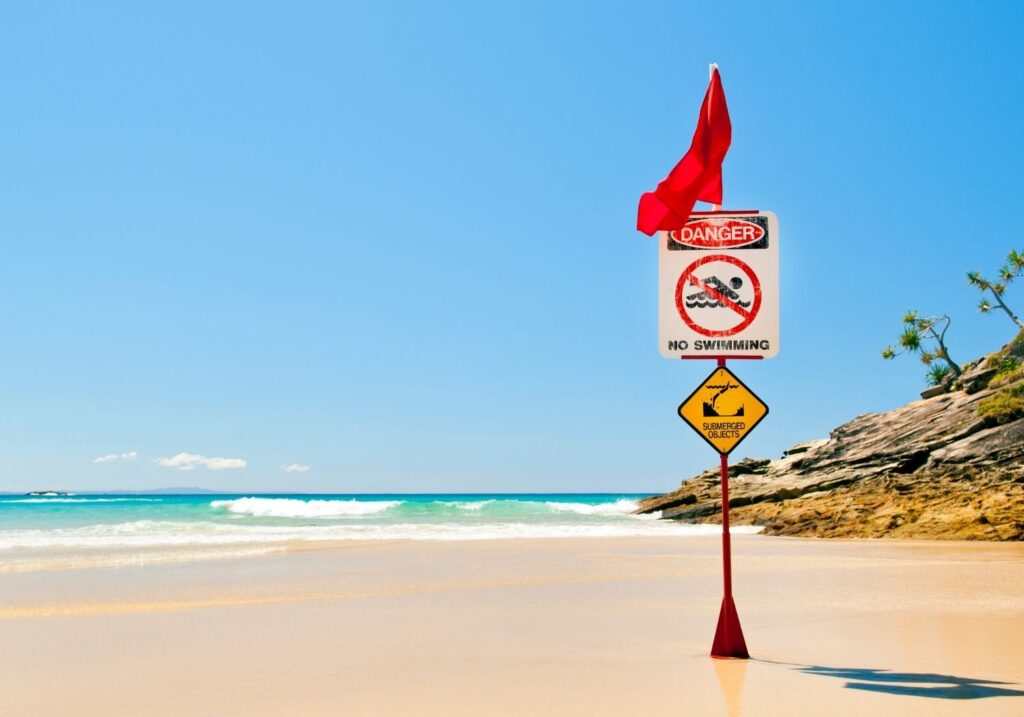
Now that you have picked the right spot, have your belongings safe and have put on sunscreen, the next significant step is to understand specific safety precautions related to the beach spot or the sea.
When you arrive at the beach, look for any signs or flags posted. If you can’t find them, locate the lifeguard station and ask them about the current water conditions. After you’re aware of the signs and flags that are there, you need to know what they mean.
While the meanings and use of flags varies by country, here’s a guide to the most common beach flags:
- Double red flag: access to water is forbidden, no public swimming allowed
- Red flag: high hazard of currents
- Yellow flag: medium hazard or moderate currents, it’s best to stay near the shore, especially if you are not a good swimmer
- Purple flag: dangerous marine life such as jellyfish, stingrays, or fish that may cause harm
- Green flag: low hazard, calm conditions
- Black and white checkered flag: these are generally posted as a pair to show separate sections where swimmers and surfers can be safely apart in the water
If you’re advised by lifeguards, beach staff or the flags that you shouldn’t go into the water, always follow that advice, strong and invisible currents could take you away and into the deep sea unexpectedly, our Co-Founder Mar Pages knows this well because she was a beach lifeguard for 6 years!
Pro tip: go into the water with your feet first and walk dragging your feet in the sand. This way, vibrations will alert animals under the sand such as stingrays to swim away.
Avoid getting caught in a riptide
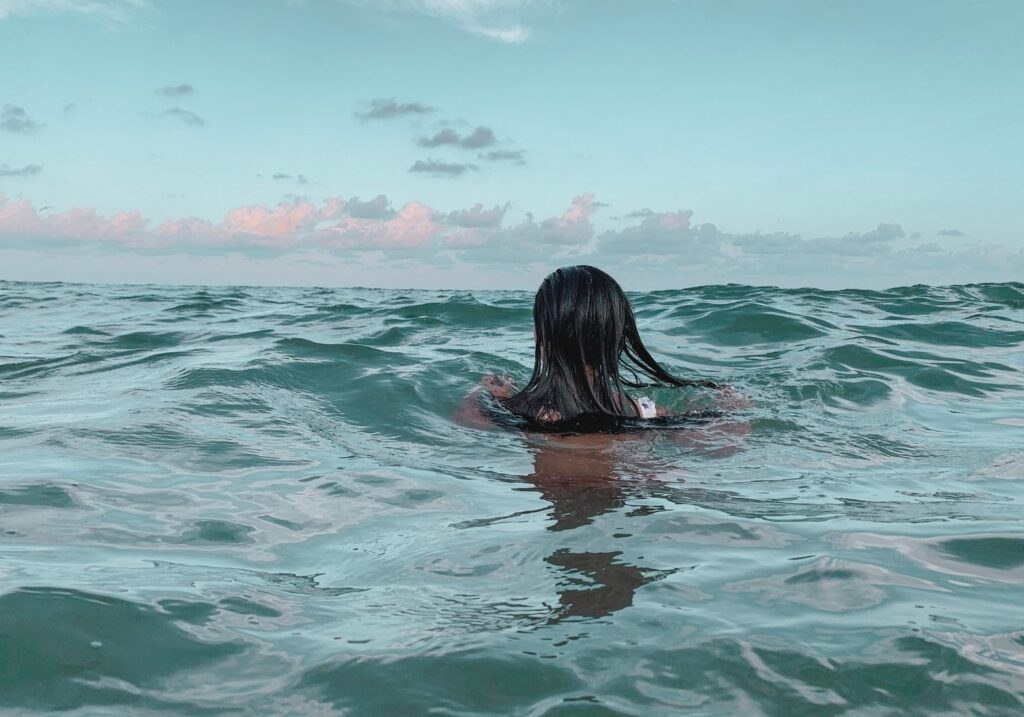
While you don’t need to know how to swim to enjoy the beach or even the sea, it’s fundamental that you understand what a riptide is and what to do in case you get caught in one, especially if you can’t swim.
Riptides are strong currents caused by tidal water moving fast and powerfully under the surface and they cause over 100 deaths and account for 80% of rescues achieved by beach lifeguards in the US every year.
Usually, when there is a riptide, the lifeguards on duty will change the flags to yellow or even red, depending on severity, but if you are at a beach where there are no lifeguards or if the currents change and the lifeguards have not realized it yet, you need to know what to do in case you get caught in one of these currents and can’t swim back to shore.
The first thing you should do is raise your arms and call out for help. Lifeguards are trained to keep an eye on anyone in the water and even if there isn’t a lifeguard, other beach goers could see you and look for help.
If you see that help is coming, try to float on your back and keep breathing to preserve your energy and avoid swallowing water.
If you don’t see anyone coming to your rescue, the correct way to proceed, according to the U.S. National Weather Service, is to swim to shore in a parallel way to the waves and not in a straight line because the currents will suck you back out and you will tire yourself out, start swallowing water and potentially drown.
Being on the beach alone at night
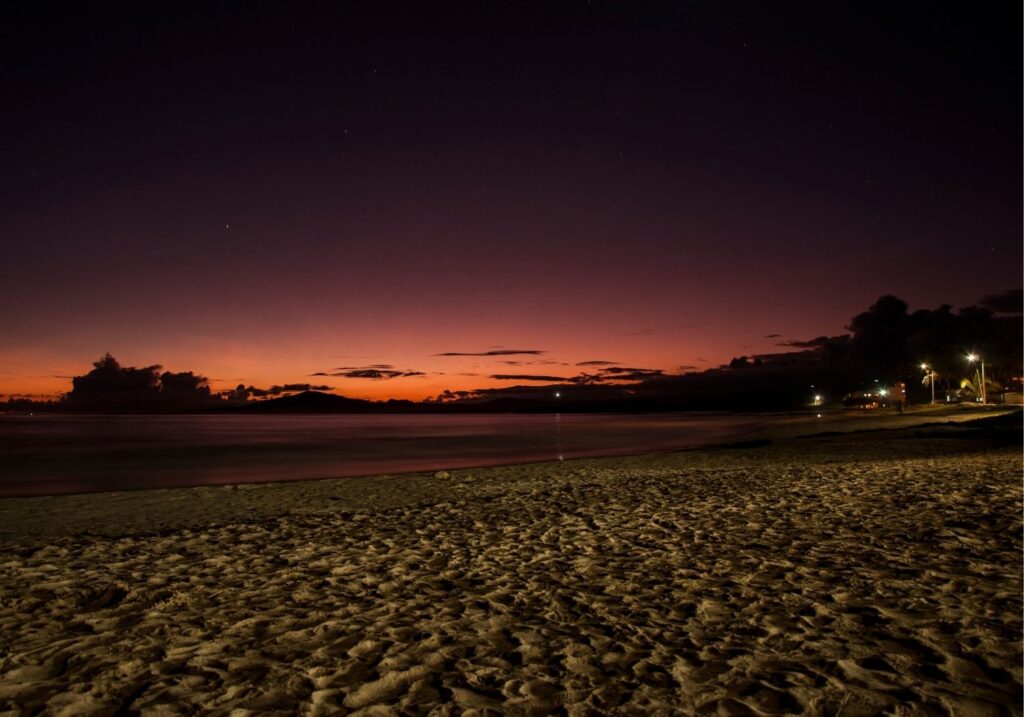
Going to the beach by yourself at night is a whole different experience that comes with its own challenges.
Firstly, near the sea the weather may get chillier, so bring a hoodie or jacket to keep you warm.
Secondly, while it’s romantic to walk under the light of the moon and stars, we suggest bringing something to light your way. The flash on your phone is an option, but a flashlight would be more practical.
Last but not least, bring insect repellent. Bugs tend to come out at night and you could go back home with a nasty souvenir. Considerate amount of repellent on your exposed skin and over your clothes.
If you feel like doing something fun on your own, you can walk around, do a little stargazing, set up a picnic or even camp (if it’s allowed).
Another option is to join groups of people that are doing bonfires, singing songs around a guitar, playing sports or just hanging out. This is a great chance to meet people and make new friendships.
Keep your clothes from being damaged
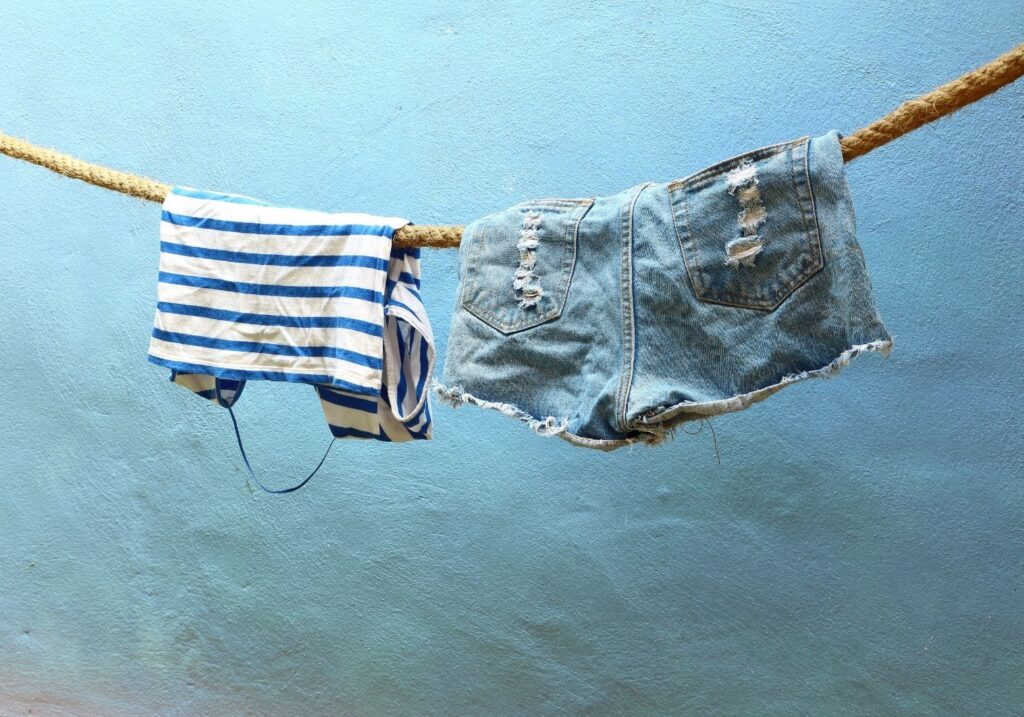
The beach can not only take a toll on your skin but also on your clothes, this is why it is important to take the following steps when you return to your accommodation after a relaxing day alone at the beach.
- Don’t leave your wet and sandy items mixed up in a bag where they can grow mould.
- Wash or rinse your clothes properly to remove salts and seawater which can damage them, especially swim suits that contain lycra, then dry them out completely before packing. If you don’t have a lot of time, you can use a hairdryer to try to get some of the moist out.
- If you can’t dry your items before packing, put them inside a dry bag so that the rest of your clothes don’t get damp.
Things to do at the beach alone
We see our members often wondering what to do at the beach alone and the answer is: almost the same you would be doing if you are with someone. You don’t need someone to read a book, have a nap, listen to some music or to an audiobook or simply people watch.
Go for a swim
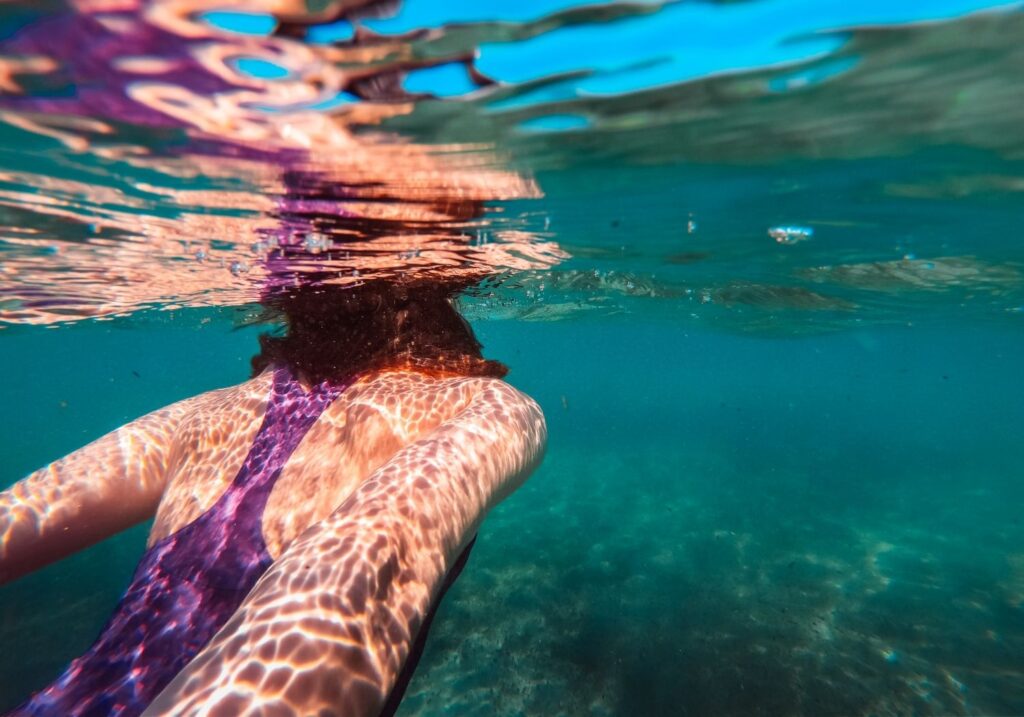
Feel the sea water on your toes and take a dive into the waves. Going for a swim is an amazing way to refresh your mind and do some exercise but remember all the tips we have given above about staying close to shore, close to the lifeguards and respecting any safety flags.
Relax and admire the horizon
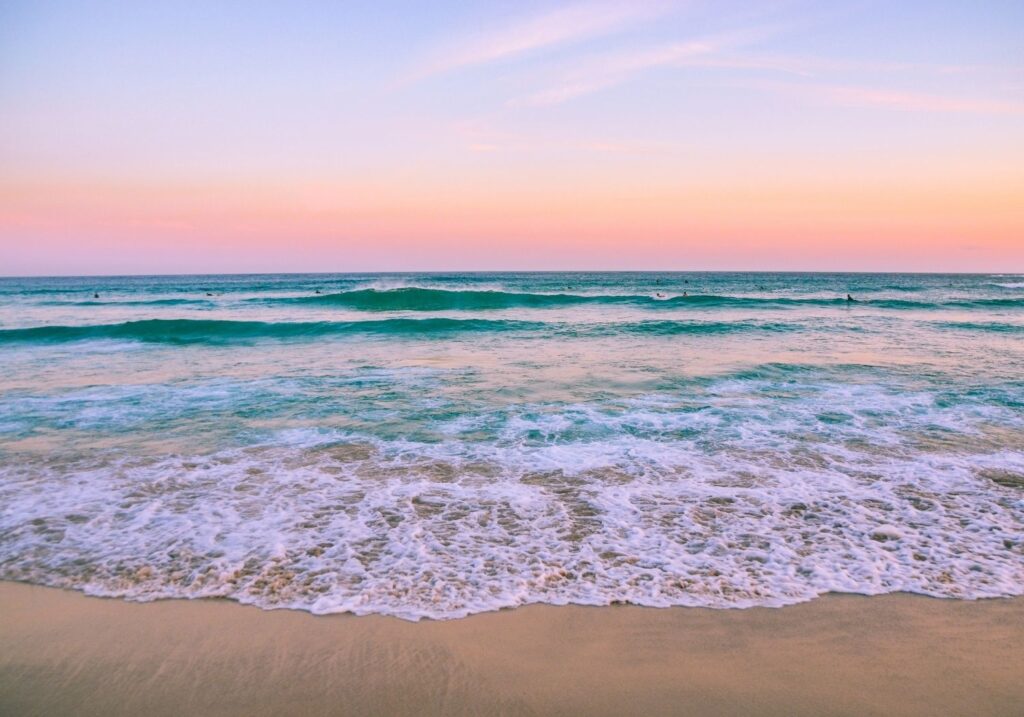
If you were looking forward to having a relaxing day on the beach, this is your chance!
Try to disconnect and enjoy your time on your own. Watch and listen to the sea. See the sun go down. Think about your journey and what you have discovered on the way. Also, envision your future and the amazing things that are coming your way.
Take this alone time in a beautiful place to reflect on your trip and on all the great experiences you’ve had. You can also take incredible pictures of yourself to show to your friends and family or share on social media.
Sunbathe

For all those tan lovers out there, a day alone on the beach is the perfect excuse to sunbathe a little and get a glowing tan.
Don’t forget to follow all the tips mentioned above to prevent sun damage, like applying sunscreen and avoiding the hours between 10 a.m. and 2 p.m. when the sun rays are strongest and most dangerous.
Read a book

Being alone on the beach with a book or an e-reader is a perfect combo! If you were wondering what to do at the beach by yourself, take this time to finish the book you’ve been postponing or buy a new one to entertain yourself in your travels.
If you don’t know which book to choose, we’ve got you covered with our 100+ inspirational and travel-related books for women. Scroll through and find great picks on various sections: Inspiration, Career & Success books, Great Explorer stories and Travel books.
An old-fashioned book is also a great place to hide cash and a credit card, just place them in the middle and they will be unnoticeable.
Listen to music or a podcast
What a better way to relax at the beach with a great playlist or the soundtrack of your favorite movie. Another option is to listen to a podcast, which is a fantastic way to learn something new, or an audiobook.
Don’t forget to download the music and podcasts you’ll listen to beforehand, so you can access them even if there’s no Wi-Fi available.
Join a sports game
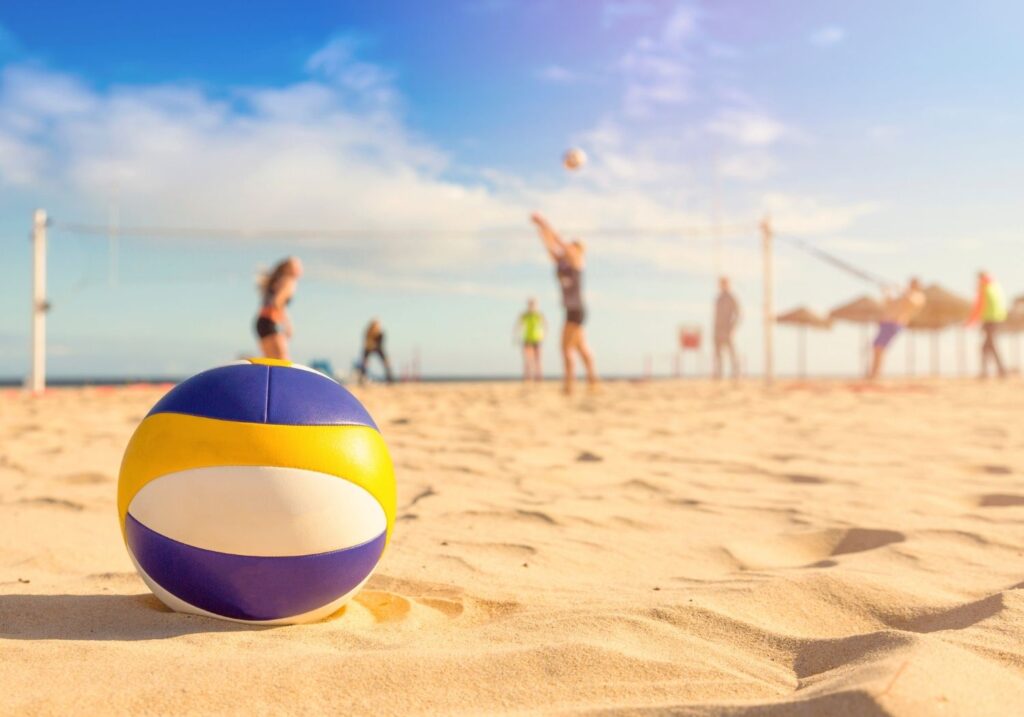
If you spot a group of people having a volleyball game, sand soccer game or a frisbee match, feel free to say hi and ask them if you can join.
There’s a great chance they will be friendly and you’ll end up having fun and meeting new people.
Even if it does not work out, pat yourself on the back for being courageous and putting yourself out there, it’s their loss!
Do your daily exercise
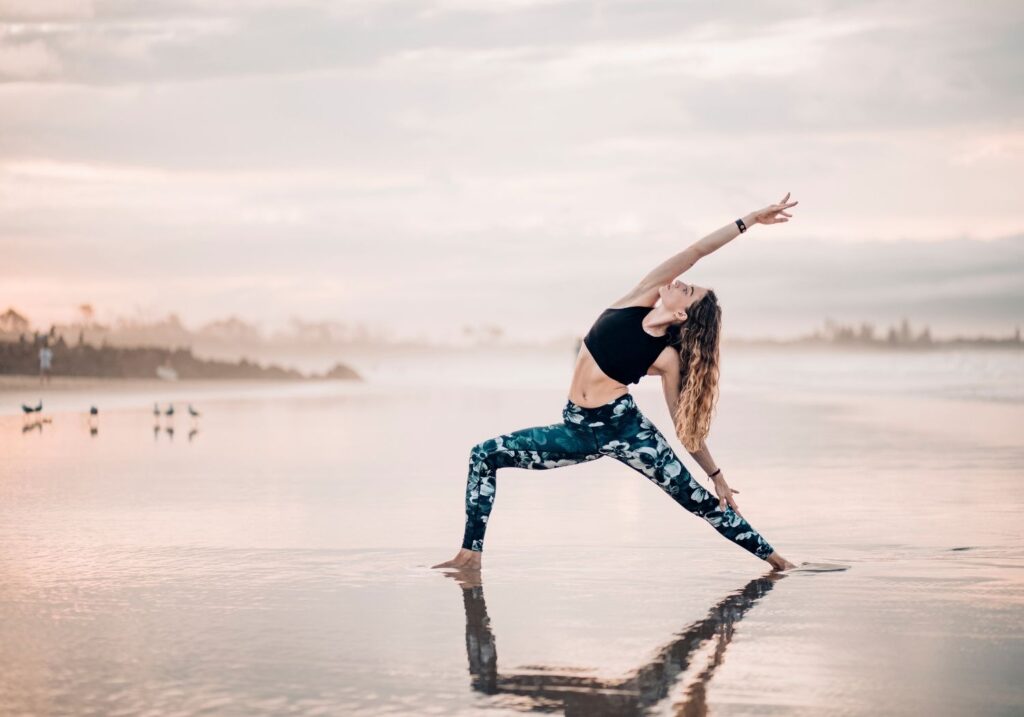
If you feel active, the beach is an awesome place to get up and do some exercise with an incredible view. You could do some yoga stretches, barefoot jogging or bodyweight exercises. Going for a swim and joining a sports game, like mentioned above, also count!
This is one of the best things to do at the beach by yourself and will improve your overall health and energy during your trip.
Write on your journal
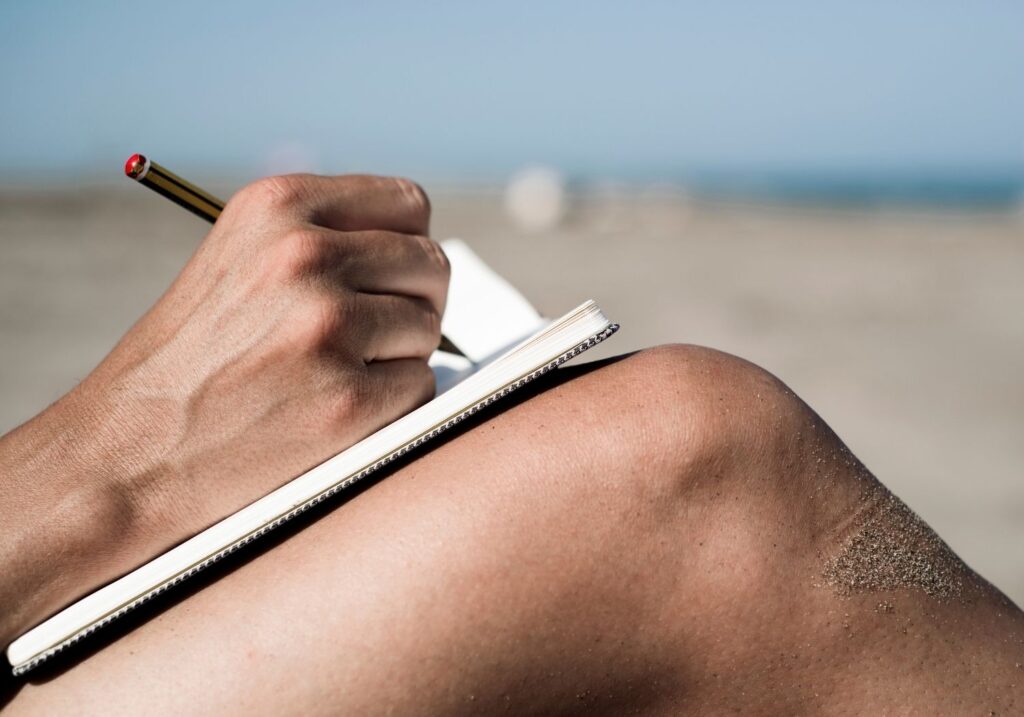
Get your creativity flowing by writing in your journal. Record what you are thinking or feeling, reflect on what you did on the day before or the trip so far, or write a letter to yourself.
This is your time to be with your own thoughts and share them with yourself. Get some inspiration from our 100+ Wisest Solo Travel Quotes.
Go for a walk
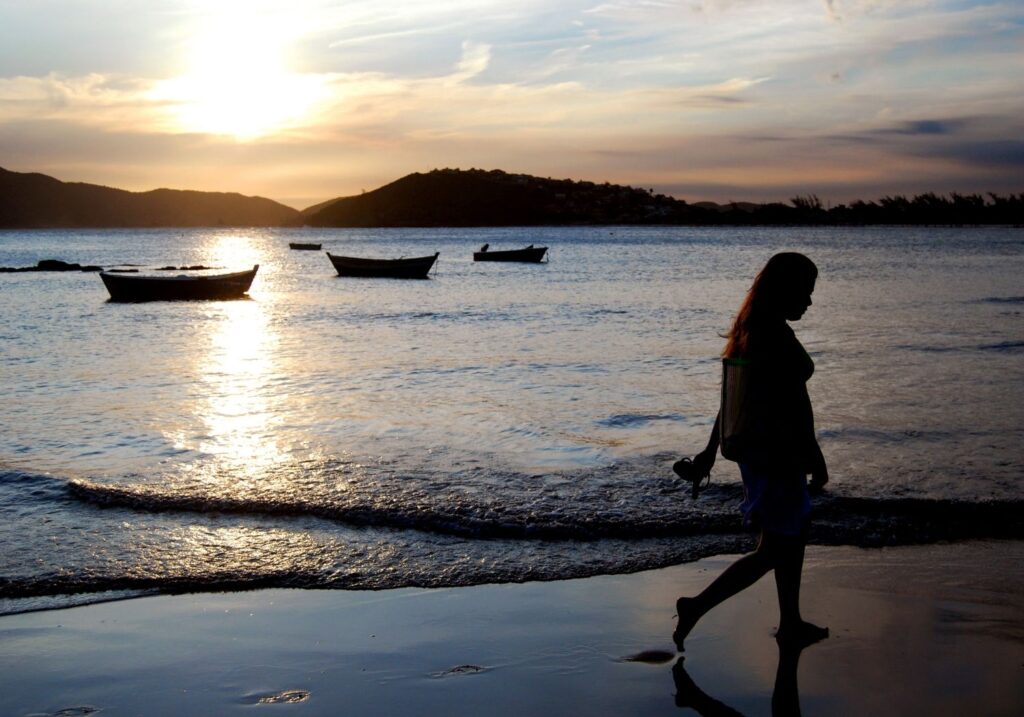
What we love doing the most when at the beach is going for a walk along the shore with the waves lapping against our feet and ankles, there is nothing more relaxing and beautiful and guess what, it is also a great type of exercise!
Make new friends

We’re all for traveling solo, but meeting people when traveling can make a memorable trip full of wonderful shared memories. That’s why we take solo female travelers on our only-women small group tours, and we have wonderful beach destinations like Barcelona & Beyond, Tanzania and Amalfi Coast.
But if you’re alone at the beach, try to spot other solo travelers or groups of travelers who seem friendly. Take a confident step forward and come near them to say hello. Strike a conversation and be yourself, you will most likely connect with others and have lots of fun.
Dana, one of our members, did this and shared her story on our FB group.
“So yesterday I drove there and enjoyed some beach time. Ended the day with a fantastic dinner and while walking on the rocks to watch the sunset met a couple of architects from Florence”.
Conclusion
So, is it weird to go to the beach alone?
It is not!
It’s a great way to get out of your comfort zone, admire a beautiful sunset, maybe even make new friends or cultivate a tan.
But, as always, we recommend doing your homework and preparing with solo travel resources, so you can enjoy a safe and fun time.
Go on, choose your next warm destination, follow these tips, loosen up and enjoy a wonderful day in paradise with the best company: yourself.

